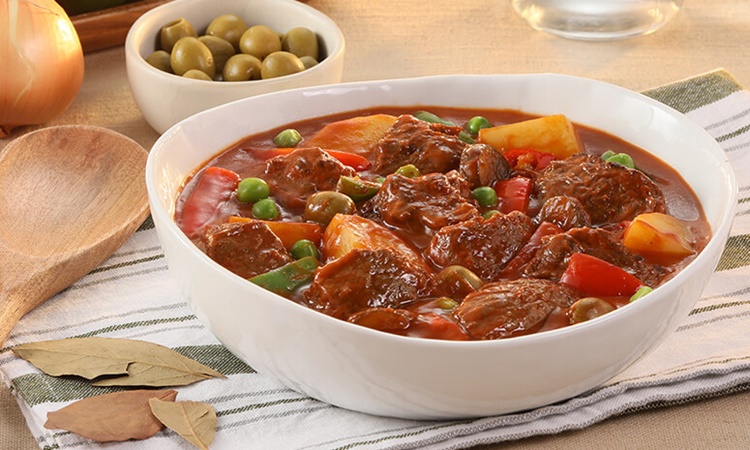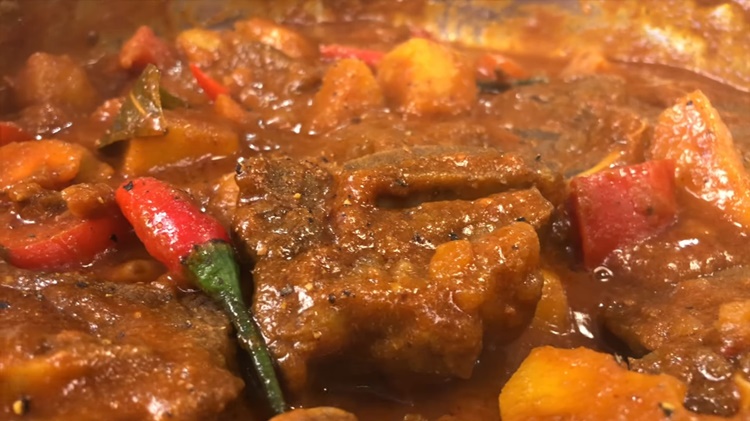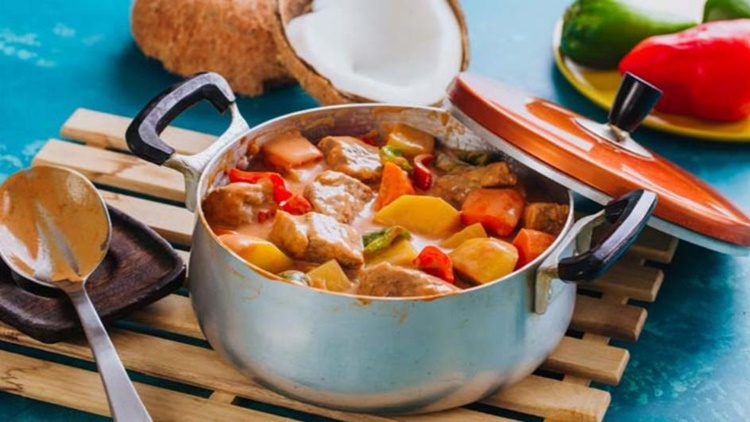CALDERETA – Here is the history and origin of this popular Filipino stew that most of us probably didn’t know.
Caldereta or kaldereta is a popular stew made from goat meat with liver paste and vegetables such as tomatoes, potatoes, bell peppers, and hot peppers. While goat meat is the traditional choice, versions with beef, chicken, or pork are also common. The dish also shares some similarities with afritada and mechado.
It is a beloved dish served during special occasions and celebrations. A key ingredient that makes this dish special is the use of liver paste or spread, which adds a distinct savory richness that shows the inventiveness of Philippine cuisine.

Kaldereta has its roots in the Ilocano region, where cooking with goat meat is a beloved tradition. The Ilocanos have mastered preparing various goat dishes like papaitan, kalawin, adobo nga kalding, and inalseman.
Its comforting warmth and hearty flavors bring people together to enjoy the country’s rich culinary heritage. It can be savored as a main dish with steamed rice or enjoyed as a tasty ‘pulutan’ while sipping a cold drink.

The name “caldereta” comes from the Spanish word “caldera,” meaning a large pot or cauldron, reflecting the dish’s origins during Spanish colonial times (1565 to 1898).
The American colonial period (1898-1946) and the great Chinese influence in Filipino cuisine also played roles in shaping caldereta.
The use of tomato sauce and liver spread can be linked to these influences, with tomatoes becoming more common in Filipino cooking during the American era, and the use of various sauces and seasonings reflecting Chinese culinary techniques.
However, Filipinos have skillfully transformed it, blending Spanish influences with local tastes and techniques.
Caldereta represents the creativity and versatility of Philippine cuisine. With each bite, one can taste the vibrant blend of flavors that have shaped this dish over centuries.

